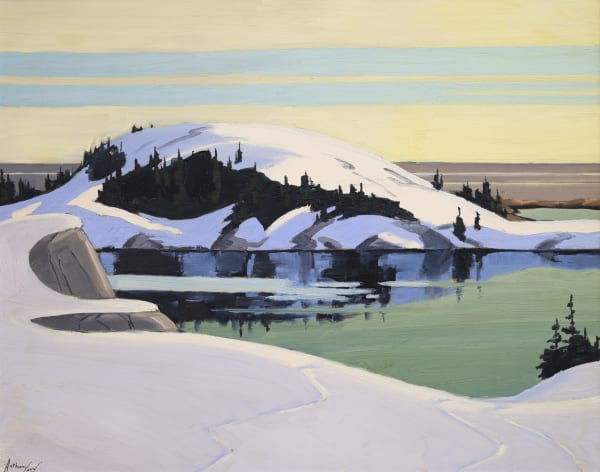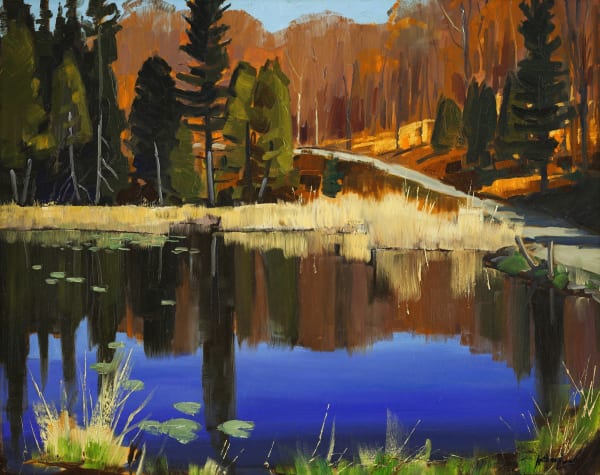“Law was unconventional. Though he adapted well to the customs and traditions of the military, he saw and experienced life through the lens of an artist looking for his next canvas. His passion for art-making equaled his love of the sea and naval life and he managed to balance both during parallel and remarkably successful careers.”
Lieutenant Commander Pat Jessop
Charles Anthony Law (October 15, 1916 - October 15, 1996) was a notable Canadian artist and naval officer who made significant contributions to both the world of art and the Canadian Navy. His artistic career was marked by a unique blend of creative expression and a commitment to documenting significant historical events.

Anthony Law; East Coast, Baffin Island
Born in London, England, to Canadian parents, Anthony Law's family came to Quebec City in 1917. His early life was characterized by diverse cultural influences. He attended the University of Ottawa from 1931 to 1936, where he became a member of the Art Association of Ottawa and received instruction from Frederick Varley, Franklin Brownell, and Frank Hennessey. He also studied with Percival Tudor-Hart from 1934 to 1937.
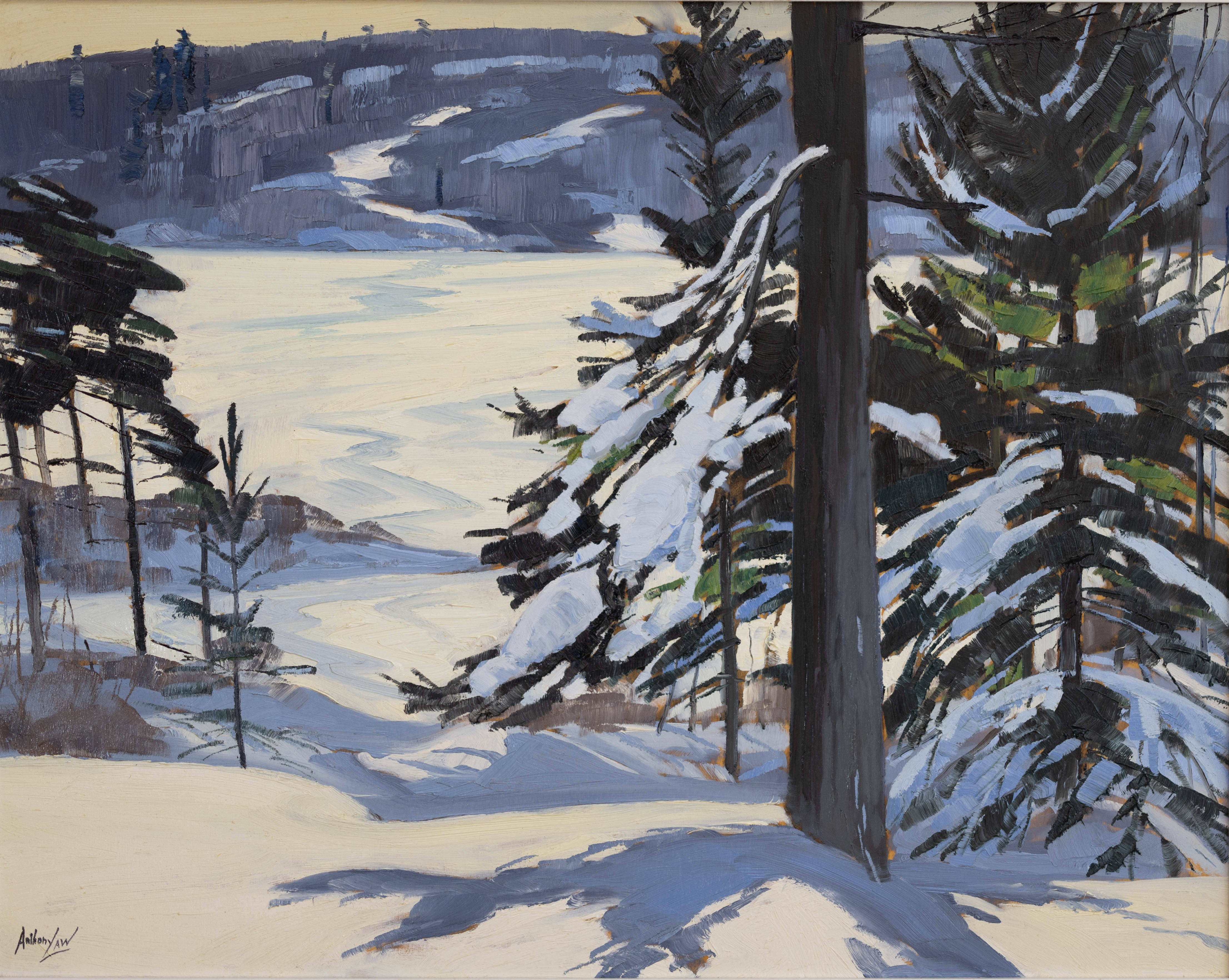
Anthony Law; After Snowfall, Williams Lake, Halifax, NS
Law travelled extensively around Canada. His destinations included Quebec, Ontario, Nova Scotia, British Columbia, and the Arctic. He married fellow artist Jane Shaw.
However, Anthony Law was not only an artist but also a naval officer. His distinguished career in the Canadian Navy provided him with unique opportunities to serve his country and document significant historical events. He held the rank of Commander on several torpedo boat engagements against the German navy and because of his dedicated service during the Normandy landings, Law received the Distinguished Service Cross.
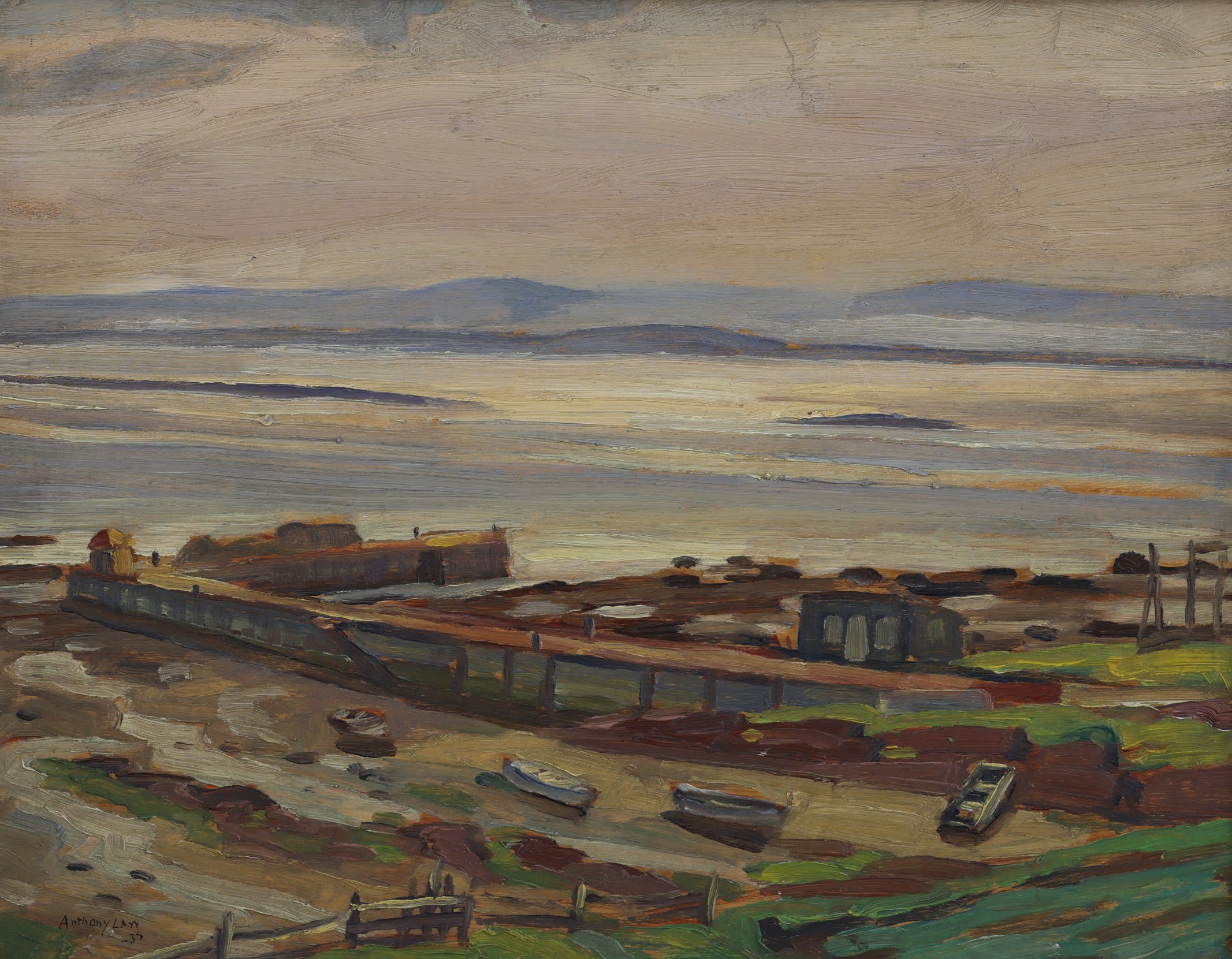
Anthony Law; Pier at Low Tide
In between his duties Law would do painting and sketching of the war scenes around him. When Law’s flotilla was destroyed through enemy actions, Law became an official war artist and created 29 large oil canvases and 75 oil sketches. His artistic work during this period captured the experiences and realities of war, contributing to the historical record. Law retired from the Navy in 1966.
Following retirement, Law became artist-in-residence in Halifax, Nova Scotia at St. Mary’s University. He received an honorary doctorate from St. Mary’s in 1981. Law exhibited with the Royal Canadian Academy, the Art Association of Montreal, and the Nova Scotia Museum of Fine Art. The Canadian War Museum has a number of his pieces that were done during the war and his work is preserved in collections around the country.
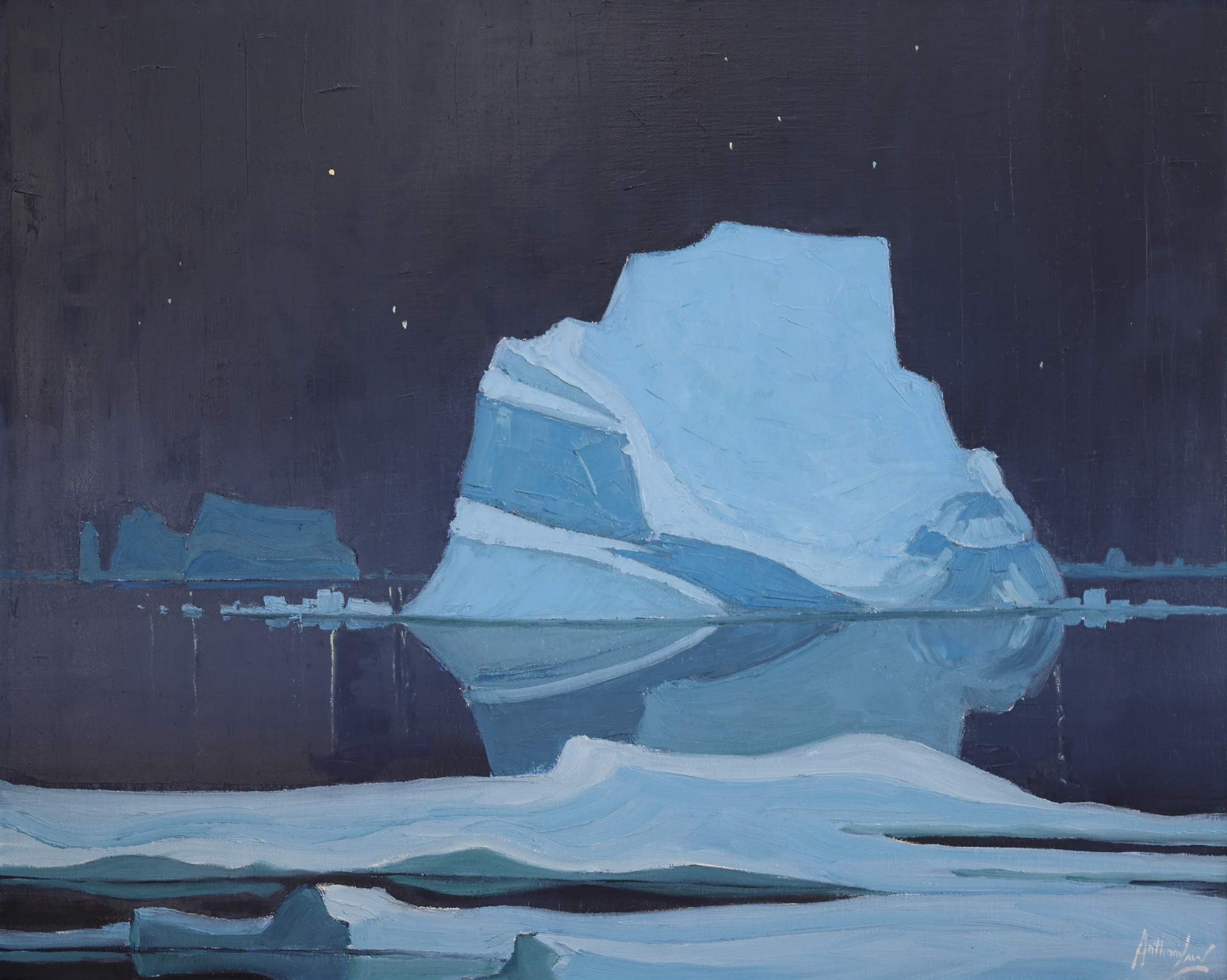
Anthony Law; Phantom Iceberg
Law's artistic style and influences were drawn from the traditions of the Group of Seven, a renowned collective of Canadian landscape painters. Their emphasis on capturing the unique beauty of the Canadian landscape left a lasting impact on his work.
One of the defining features of Law's artistic career was his deep connection to the Arctic. He made several trips to the North while serving with the Navy, and it was the Arctic landscape that resonated with him the most. His depictions of the Arctic showcased its unique beauty and the challenges it posed, providing viewers with a glimpse into this remote and remarkable region.
